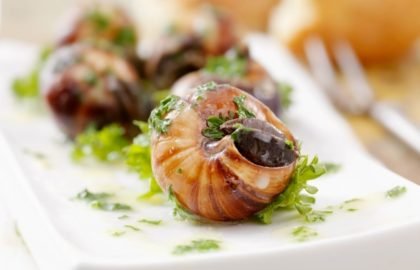Arabic Food
“La test’hi”- means do not feel shy about having more. Be assured this is one of those popular cuisines that will make you full in the stomach but still leave you yearning for more.
The cuisine of a particular land is intricately woven with its culture, national dress, architecture, traditions, and lot more things. Mingle it with globalisation and you have a food culture that has transformed in the last two decades. The most popular nowadays is Middle Eastern cuisine. It is not only influencing what we eat but also how we eat. Although it is just the beginning, the cuisine is becoming increasingly popular among Westerners.
The food culture of Westerners has changed rapidly which can be attributed to changing lifestyles (apart from globalisation), wellbeing, health, and sustainability. This is due to the very reason that Middle Eastern cuisine, especially Arabic cuisine is regarded as an authentic dish that still retains its traditional way of cooking giving out flavourful and healthy food. The cuisine does not change its taste with the land it travels to. The region has a distinctive style of food that is embodied in various colourful mezze platters, emphasizing natural ingredients and simplicity.
To avoid any negative connotation, Middle Eastern cuisine was hiding under the broader term of Mediterranean cuisine. But with people traveling to different places, with migration, and also with social influencers, the cuisine has been globally recognised. It is dishes such as falafel and hummus that have changed the perspective from the Mediterranean to Middle Eastern and more particularly Arabic cuisines.
Before we launch into a tirade on Arabic food, get Action Camera, because with all those wonderful Arabic foods you need to keep a memory of it.
Happily and gladly Halal
Yes, Arabic cuisine or any other Muslim cuisine is entirely based on their ethical and religious sentiments. According to Muslim tradition, before an animal is slaughtered they are taken care of and these animals should not be suffering from any ailments at the time of slaughter. Hence, the ‘halal’ food that you are served is of the best quality.
With that in mind, immerse yourself in the mouth-watering cuisine that is rich, wholesome, healthy, and freshly prepared and one that does not pinch your pocket. Traditionally, when each portion of food is served, the table will be decorated with a variety of salads of Arabic cuisine, and the mezze platter that is obligatory with most of the dishes provided in the menu. You will get the perfect combination of your 5 senses being enhanced with Arabic cuisine.
Manifestation of delectable food
If you are taking a trip to the Middle Eastern region it could be for one of the following two reasons- to marvel at the skyscrapers and desert sand or to devour the delectable Arabic cuisine. Did you know that in Arabic cuisine, sharing a meal is considered a tradition and is known as “Tafathalo”? The word means “do me the honour”, an invitation to come to the dinner table to share the meal. This delectable cuisine has been influenced by the mingling of Arabs, Mediterranean, and Indian food over the centuries. You can also find traces of the influence of Turkish and Persian cuisine
Arab cuisine is distinctive because of its traditional flavours and spices. Spices that are unique to their culture- harissa, za’atar, tahini, kefir, sumac, and labneh. These lend to the dishes intriguing and exciting new flavours which make the dishes stand out. In almost all dishes you will likely find various combinations of the following ingredients- onion, fish (in coastal regions), curry powder, cinnamon, garlic, lamb or veal, mild to hot sauces, rice, saffron, mint, yogurt, sesame, spices-Indian influence, tea, thyme or oregano, citrus centric fruits, turmeric, vegetables such as parsley, tomato, eggplant, lettuce, green pepper, green beans, cucumbers.
Cuisine that amalgamates with hospitality
Arabic cuisine is synonymous with hospitality. Maybe because the Arabs were once Arab Bedouins who depended on each other immensely to survive the harshness of the desert, especially when traveling. Hence, hospitality is something that runs through their blood has become second nature. When it comes to hospitality they take it to their hearts and will honour their guest with every opportunity to the best of their ability.
A cuisine that activates your 5 senses
Not all cuisine can enhance your 5 senses which Arabic cuisine does. Go to an Arabic restaurant and order your meal. Or you can befriend some Arabic people and potentially be fortunate enough to find yourself invited to their house and when you are served with their food, you will feel your 5 senses come alive. The dishes served are the perfect combination of flavour, colours, tastes that fulfil the living dream of any foodies.
Few of the awesome dishes that you must try
Arabic cuisine is characterized by healthy, fresh, wholesome, rich, and aromatic food. Every dish you taste has its distinctive taste. Here is a comprehensive list of some delectable dishes that are sure to fulfil the stomach of anyone who loves food.
- Humus is a staple dish found in all Arabic restaurants. Start your Arabic foody ride with this smooth and creamy mixture of mashed chickpeas, olive oil, tahini, garlic, and lemon juice. It can be spread in a burger, with baked potato, either as a dip with pita bread and vegetables. As a condiment, its flavour can be combined with other Arabic dishes.
Foodie tip: Get the true local tang by adding more garlic to enhance the smell and taste.
- Take a small bite of this laffa/hot pitha filled to the brim with succulent meat, sauces, cream, authentic Arabic spices and it won’t be enough. Take a big bite and still, you yearn for more. This is the Greek version of the Greek gyro. A tasty bundle of goodness is Shawarma. The meat is slow-cooked on a turning spit. Preserving the rustic flavour that is so distinctive in Arabic cuisine.
Foodie tip: Try it with beef or lamb and you will be wholly delighted
- Used as a condiment with another Arabic cuisine, it is found alongside hummus on a mezze platter. Baba Ghanouj is the best eggplant dish ever. One of the favourites among the vegetarian platter, it has a succulent eggplant dip. What makes this vegetarian dish so flavoursome is the combination of flavours such as roasted eggplant, Arabian spices, garlic, and the popular sesame seed paste. Taste the dip and you are going to love it.
Foodie tip: Want to get the real Arabic taste, ask it to be spiced up with chilli
- How about tasting the different types of Halvah. After a meal, you will be served a dessert that is guaranteed to sweeten your soul. Shaped as a cheese wheel, similar to a layer cake, the main component of halvah is semolina or wheat, while the main ingredient in nutty halvah is tahini paste that is sesame seeds and sugar, often flavoured with chocolate and pistachio. Halvahs are spongy in texture and one which melts in your mouth.
- How about some crunchy and chomping snacks, healthy ones. Tabbouleh is the best appetiser which is a mixture of parsley, herbs, bulgur, mint, mixed with onions, tomatoes, and some vegetables. Best food who are watching their diet but at the same time still want to taste the flavour of Arabic cuisine.
- Layers of thin sheets of buttery filo dough, then filled with a mixture of coarsely Arabian spices and coarsely grounded nuts. This mixture is bound with sugar syrup and either with orange blossom or rose water. With lots of love presented to you is Baklava. Drizzled with honey, Baklava comes in different shapes. This sweet dish is similar to Greek Baklava.
- Often found alongside hummus and tahini on the mezze platter, Labneh is a thicker, denser, and creamier variant of traditional cream cheese. Don’t worry this is low in calories. Dip your za’atar pita bread, fruits, and even your favourite veggies and enjoy.
Foodie tip: For that authentic version sprinkle some Arabic spices on labneh and enjoy your lower calorie snacks/meal
- How about some authentic sandwich in Arabic style, one that is a little crunchy too. Yes, that is falafel for you. It is a gigantic pita bread wrapped with falafel patty. Often accompanied with fresh vegetables, tangy pickles, and tahini spread. Why not order a salad to make it more crunchy and yummy? Falafel finds its prestigious position on the obligatory mezze platter.
- Get a Ulefone Armor 5, because you do need to click this. This dish’s literal translation is “large tray” and almost resembles enormous pizza. Mansaf consists of chunks of lambs cooked in a broth of Jameed, yogurt and then garnished with almond and pine nuts, on a heap of rice which is placed on an oversized platter of flatbread.
- Za’atar is a staple component of any Arabic cuisine. No meal is complete without this warm and versatile pita bread. Made of dough and sprinkled with Arabic spices of oregano, thyme, and marjoram. It uplifts your sensory experience when dipped in any appetizer placed in the mezze platter.
- A dip made of a base of toasted and sesame seeds is ground to a paste and is an essential accompaniment to almost all Arabic menus. The highlight of Tahini is the mixture of sweet and sour, and can be found in every mezze platter. Have Tahini and Halvah and then thank us later.
With globalisation and the advent of social media, Arabic cuisines are being recognised and allowed to celebrate their own unique identities that give out their distinctive flavours. So get indulgent and taste some of the best recipes in the mezze platter.
Discover more from Relax Around The World
Subscribe to get the latest posts sent to your email.







